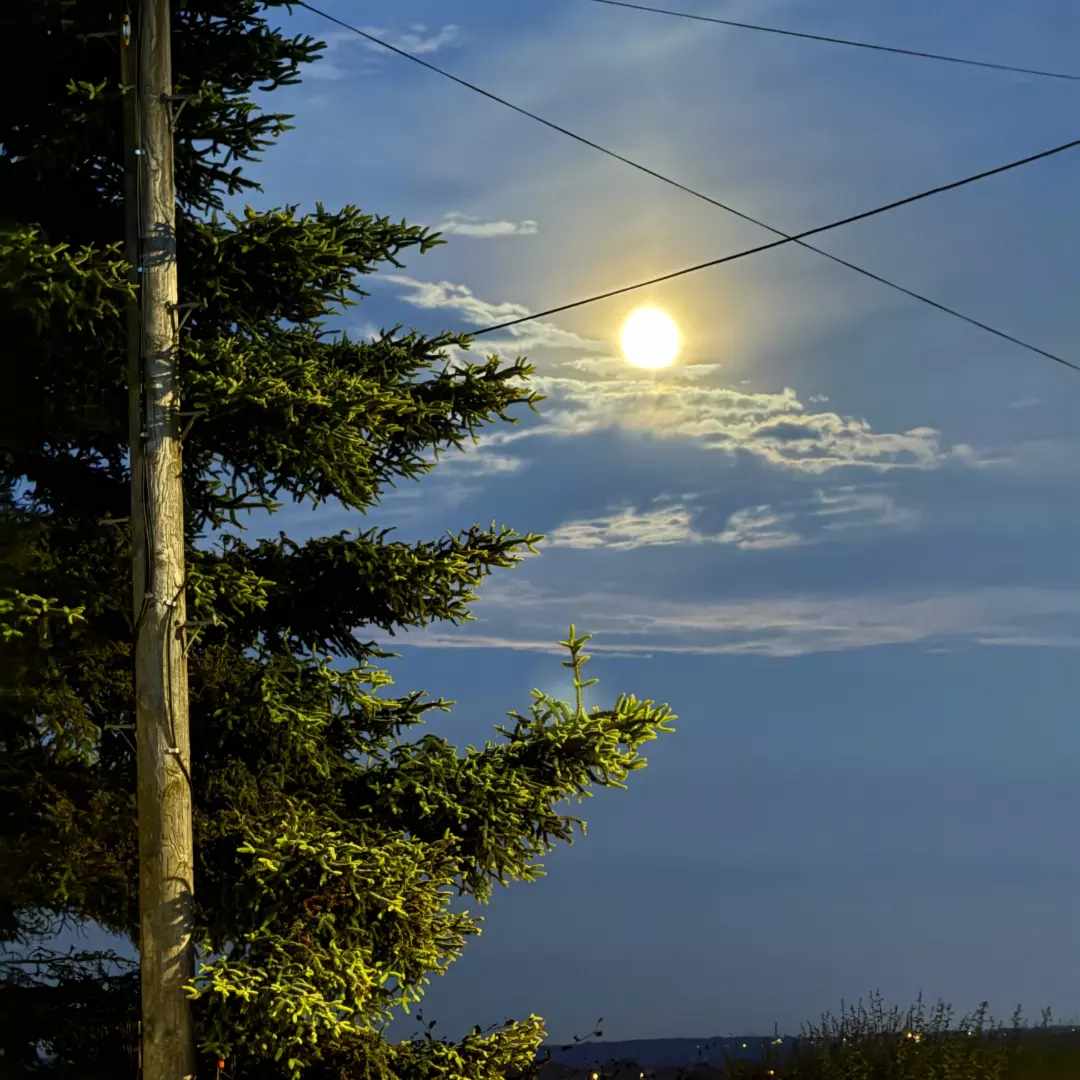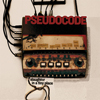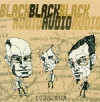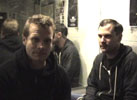 With mainstay Vincent De Roguin absent and Stephen O'Malley exercising sharp restraint, Æthenor have released their best album and maybe one of the best live recordings I have ever heard. Assembled from three shows recorded in Oslo, Norway during 2010, En Form For Blå captures Æthenor improvising a loose electric sound bound expertly together by the talents of percussionist Steve Noble and one-half of the Ulver crew. Together they create a surprisingly intelligible sound, which betrays its impromptu origin.
With mainstay Vincent De Roguin absent and Stephen O'Malley exercising sharp restraint, Æthenor have released their best album and maybe one of the best live recordings I have ever heard. Assembled from three shows recorded in Oslo, Norway during 2010, En Form For Blå captures Æthenor improvising a loose electric sound bound expertly together by the talents of percussionist Steve Noble and one-half of the Ulver crew. Together they create a surprisingly intelligible sound, which betrays its impromptu origin.
Hotter than July. This week's episode has plenty of fresh new music by Marie Davidson, Kim Gordon, Mabe Fratti, Guided By Voices, Holy Tongue meets Shackleton, Softcult, Terence Fixmer, Alan Licht, pigbaby, and Eiko Ishibashi, plus some vault goodies from Bombay S Jayashri and Pete Namlook & Richie Hawtin. Solstice moon in West Midlands, UK photo by James. Get involved: subscribe, review, rate, share with your friends, send images! |



 Although they appeared on a variety of compilations in the early 1980s, including the legendary Rising from the Red Sands, Pseudocode mostly remained unknown, putting out their own cassettes and the occasional odd 7", but never reaching the same levels of notoriety that contemporaries in the early industrial underground enjoyed. Nearly 30 years later, some of these earliest recordings have been issued, for the first time, in a deluxe double LP package.
Although they appeared on a variety of compilations in the early 1980s, including the legendary Rising from the Red Sands, Pseudocode mostly remained unknown, putting out their own cassettes and the occasional odd 7", but never reaching the same levels of notoriety that contemporaries in the early industrial underground enjoyed. Nearly 30 years later, some of these earliest recordings have been issued, for the first time, in a deluxe double LP package. Recorded together using similar techniques, but vastly different source materials, these two releases feel like different parts of the same whole, with both of them emphasizing Mathieu's balancing of texture and melody, to excellent effect, through the use of processed, pre-recorded compositions.
Recorded together using similar techniques, but vastly different source materials, these two releases feel like different parts of the same whole, with both of them emphasizing Mathieu's balancing of texture and melody, to excellent effect, through the use of processed, pre-recorded compositions. I don't understand how Erik Carlson has managed to stay so woefully underappreciated and low-profile for so long, as he has a very distinctive and appealing aesthetic.  Also, he has recently been largely infallible quality-wise. That hot streak continues here: wisely sticking closely to the sound he intermittently perfected with 2009's excellent Charmed Birds Against Sorcery, Carlson has delivered yet another impressive album of spidery, shimmering beauty.  It could benefit from a bit more bite though.
I don't understand how Erik Carlson has managed to stay so woefully underappreciated and low-profile for so long, as he has a very distinctive and appealing aesthetic.  Also, he has recently been largely infallible quality-wise. That hot streak continues here: wisely sticking closely to the sound he intermittently perfected with 2009's excellent Charmed Birds Against Sorcery, Carlson has delivered yet another impressive album of spidery, shimmering beauty.  It could benefit from a bit more bite though. This album is very deceptively packaged and presented, but in the best way possible: the tame cover art and the word "folk" did nothing at all to prepare me for the extremely fun and quirky pseudo-surf gems within.  Of course, many of these pieces were originally folk songs, but they have been so jazzed-up with kitschy organs and twangy, tremelo-happy guitars as to make that term a wildly misleading understatement. Curator Stuart Ellis has assembled an improbable monster of a compilation.
This album is very deceptively packaged and presented, but in the best way possible: the tame cover art and the word "folk" did nothing at all to prepare me for the extremely fun and quirky pseudo-surf gems within.  Of course, many of these pieces were originally folk songs, but they have been so jazzed-up with kitschy organs and twangy, tremelo-happy guitars as to make that term a wildly misleading understatement. Curator Stuart Ellis has assembled an improbable monster of a compilation. Perhaps uniquely, Basil Kirchin’s appreciators include Broadcast, Coil, Sean Connery, Elizabeth Taylor, Brian Eno, and Nurse With Wound. Included here is music from his first film score Primitive London (1965) and the gangland movie The Freelance (1971). Kirchin was a pioneering twentieth-century master of texture and mood. His inventive, multifaceted music still sounds light yet off-kilter, eerie yet peaceful, both futuristic and nostalgic.
Perhaps uniquely, Basil Kirchin‚Äôs appreciators include Broadcast, Coil, Sean Connery, Elizabeth Taylor, Brian Eno, and Nurse With Wound. Included here is music from his first film score Primitive London (1965) and the gangland movie The Freelance (1971). Kirchin was a pioneering twentieth-century master of texture and mood. His inventive, multifaceted music still sounds light yet off-kilter, eerie yet peaceful, both futuristic and nostalgic. The first offering in four years from folk-rockjourneyman David Berman could easily have become a messy affair. Afteryears of booze, drugs, depression, and more booze, it seemed Berman waspoised to make the all important recovery record. It's a familiar one—it reeks of sorrow, redemption, and rehab—but Bermanknows he’s better than that, and as a result he’s peppered the newSilver Jews record with strange but brilliantly told tales of boozers,black Santa Clauses, and airport bartenders.
The first offering in four years from folk-rockjourneyman David Berman could easily have become a messy affair. Afteryears of booze, drugs, depression, and more booze, it seemed Berman waspoised to make the all important recovery record. It's a familiar one—it reeks of sorrow, redemption, and rehab—but Bermanknows he’s better than that, and as a result he’s peppered the newSilver Jews record with strange but brilliantly told tales of boozers,black Santa Clauses, and airport bartenders. It's an attractive package on the most base level. The liner notes claim, "Desire is the root of all suffering," and the artwork depicts a woman, possibly a prostitute, in some form of bondage. Paired with the rather bleak photographs of nondescript locales, the entire album screams before it ever begins playing. This stuff is vile: the album is dirty, absolutely filthy, and exciting.
It's an attractive package on the most base level. The liner notes claim, "Desire is the root of all suffering," and the artwork depicts a woman, possibly a prostitute, in some form of bondage. Paired with the rather bleak photographs of nondescript locales, the entire album screams before it ever begins playing. This stuff is vile: the album is dirty, absolutely filthy, and exciting. Somewhere there exists a Metal Valhalla, an otherworldly paradise where all of the head-banging Vikings, beer-swilling Satanists, fist-pumping Klingons and face-painted Odinists are slam-dancing under the dark crimson moonlight to the pure amplified glory of the heaviest sounds in the Universe. For all we know, this Guitar Nirvana might be completely out of reach of mere mortals, at least in this lifetime, but that doesn't stop people from trying time and again to invoke it right here on Earth.
Somewhere there exists a Metal Valhalla, an otherworldly paradise where all of the head-banging Vikings, beer-swilling Satanists, fist-pumping Klingons and face-painted Odinists are slam-dancing under the dark crimson moonlight to the pure amplified glory of the heaviest sounds in the Universe. For all we know, this Guitar Nirvana might be completely out of reach of mere mortals, at least in this lifetime, but that doesn't stop people from trying time and again to invoke it right here on Earth. The future of indie rock mixed with electrorock funk is definitely indoubt. Black Audio are a Finnish pop outfit with a mission to be thebest club band ever, or so it seems listening to their slickproductions on this release. The sad thing is that their beats arederivative, and every track is ruined by the mispronunciation of aword, or a strange effect that throws everything out of balance. Thereis a lot of creativity in their music, no question there, but it hasvery little substance that can be called originality. This single,composed of one undisturbed track off their debut album and two remixedversions of album tracks, is enough to give a taste of the band andtheir flavor, but there is precious little here that would give me anycause to want to listen to their full-length at all. "Louisiana" iskeyboard funk with scratch guitar and a steady programmed beat, butit's crippled by the flatulent keyboard bassline, and the repeatedphrasing of "Yamaha" as "Ya-MAH-ha." "Rock 'N' Roll Egos" starts offfairly strong, with a labored rhythm and guitar bend, but it's thelyrics that ultimately do this one in, as well: "Yeah I hate therednecks, dislike hipsters even more/Getting along with mean morons forthe sake of business makes me a whore." It just shows that subjectmatter only gets you halfway there; next you have to carry the conceptto the masses on your words and feelings. Maybe something is lost inthe translation here, and that's part of the problem. "Mockba 1980" isa tribute to Finnish Olympic medal winners of the past, but the remixhere just plods at first, then annoys at the end with its blandkeyboard sounds and rapid-fire for no reason beat. It's a good attempt,and maybe there would be more on the full-length for me to enjoy. Withthis as an appetizer, though, I have very little stomach for the maincourse.
The future of indie rock mixed with electrorock funk is definitely indoubt. Black Audio are a Finnish pop outfit with a mission to be thebest club band ever, or so it seems listening to their slickproductions on this release. The sad thing is that their beats arederivative, and every track is ruined by the mispronunciation of aword, or a strange effect that throws everything out of balance. Thereis a lot of creativity in their music, no question there, but it hasvery little substance that can be called originality. This single,composed of one undisturbed track off their debut album and two remixedversions of album tracks, is enough to give a taste of the band andtheir flavor, but there is precious little here that would give me anycause to want to listen to their full-length at all. "Louisiana" iskeyboard funk with scratch guitar and a steady programmed beat, butit's crippled by the flatulent keyboard bassline, and the repeatedphrasing of "Yamaha" as "Ya-MAH-ha." "Rock 'N' Roll Egos" starts offfairly strong, with a labored rhythm and guitar bend, but it's thelyrics that ultimately do this one in, as well: "Yeah I hate therednecks, dislike hipsters even more/Getting along with mean morons forthe sake of business makes me a whore." It just shows that subjectmatter only gets you halfway there; next you have to carry the conceptto the masses on your words and feelings. Maybe something is lost inthe translation here, and that's part of the problem. "Mockba 1980" isa tribute to Finnish Olympic medal winners of the past, but the remixhere just plods at first, then annoys at the end with its blandkeyboard sounds and rapid-fire for no reason beat. It's a good attempt,and maybe there would be more on the full-length for me to enjoy. Withthis as an appetizer, though, I have very little stomach for the maincourse.
